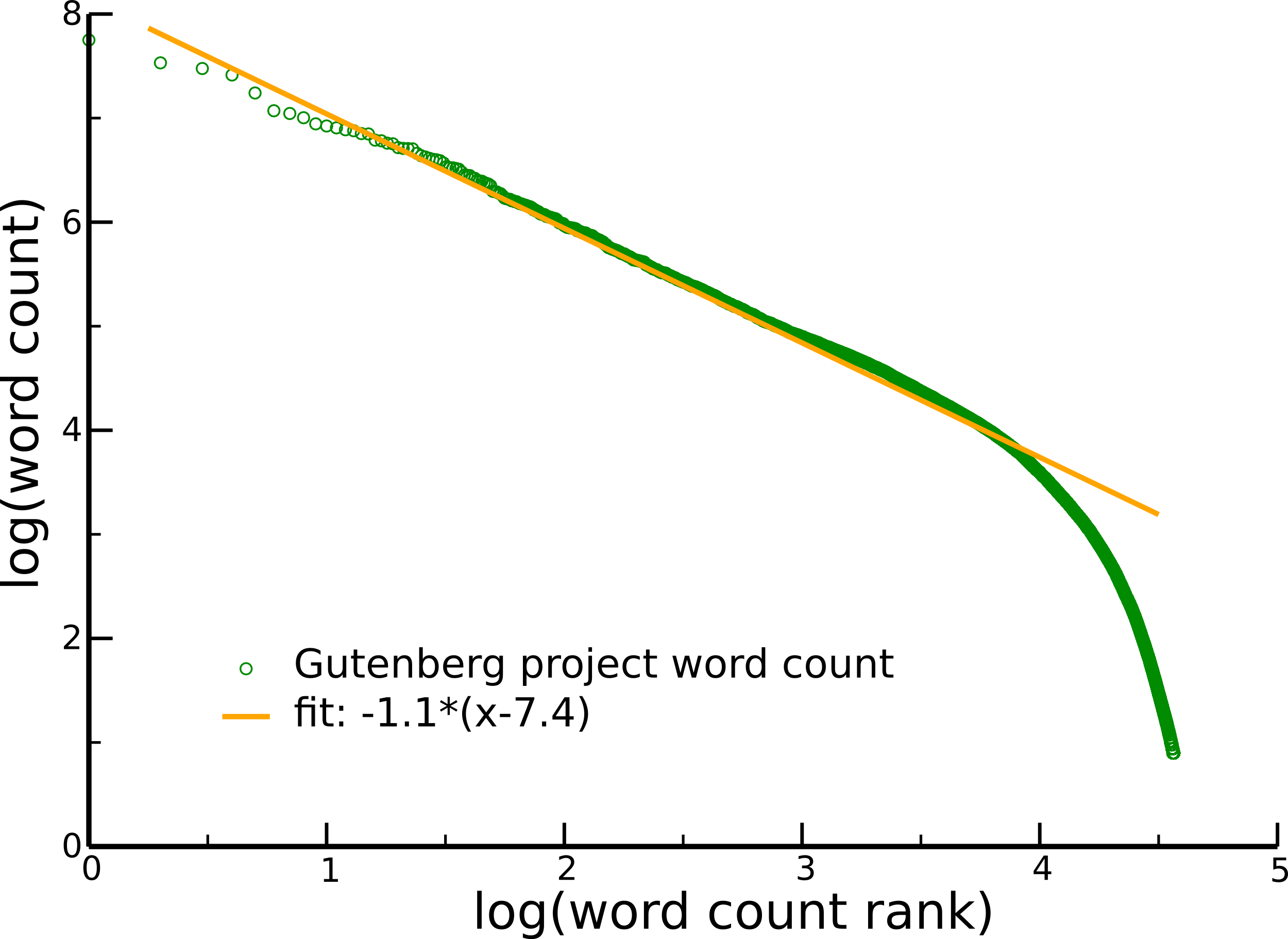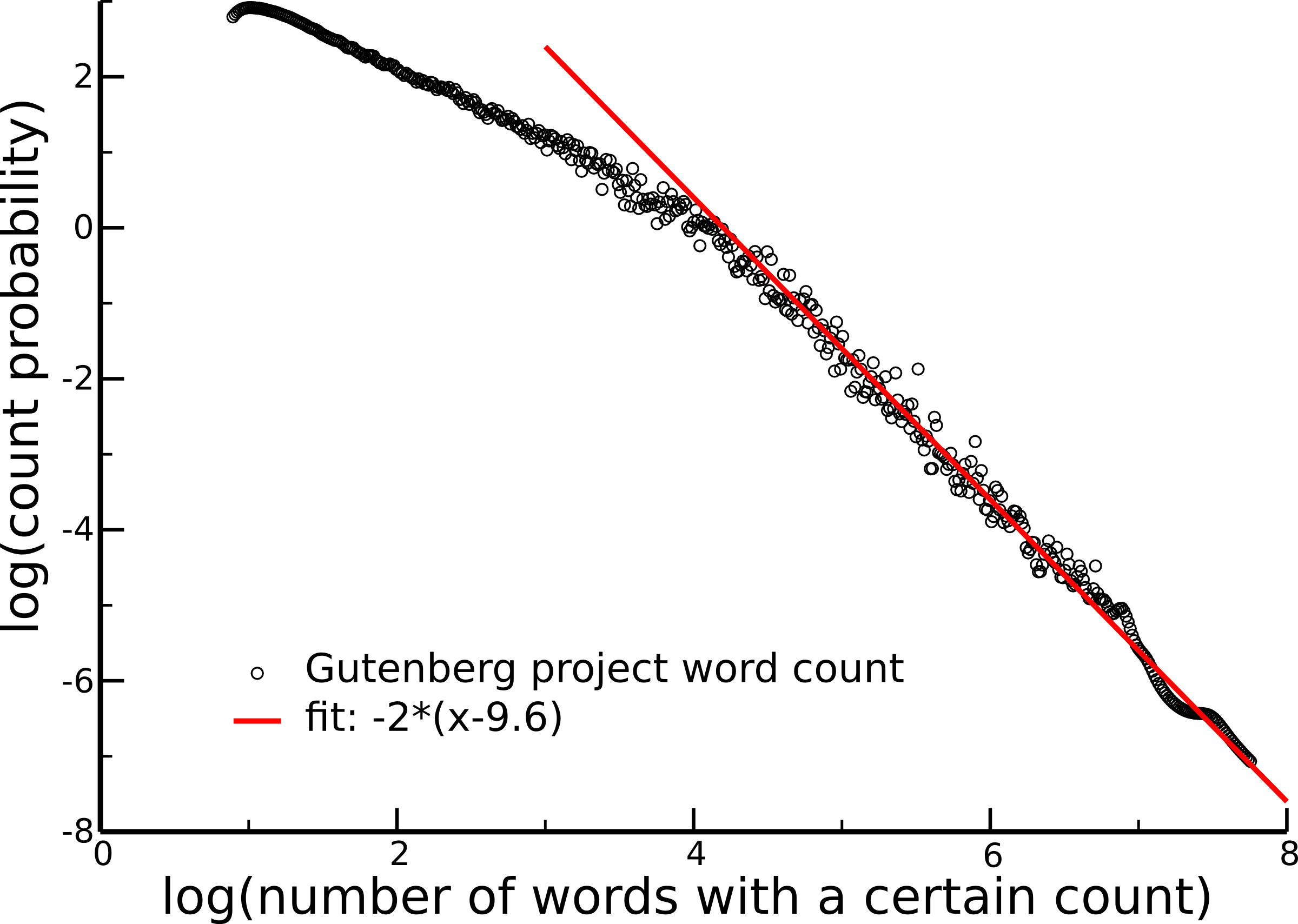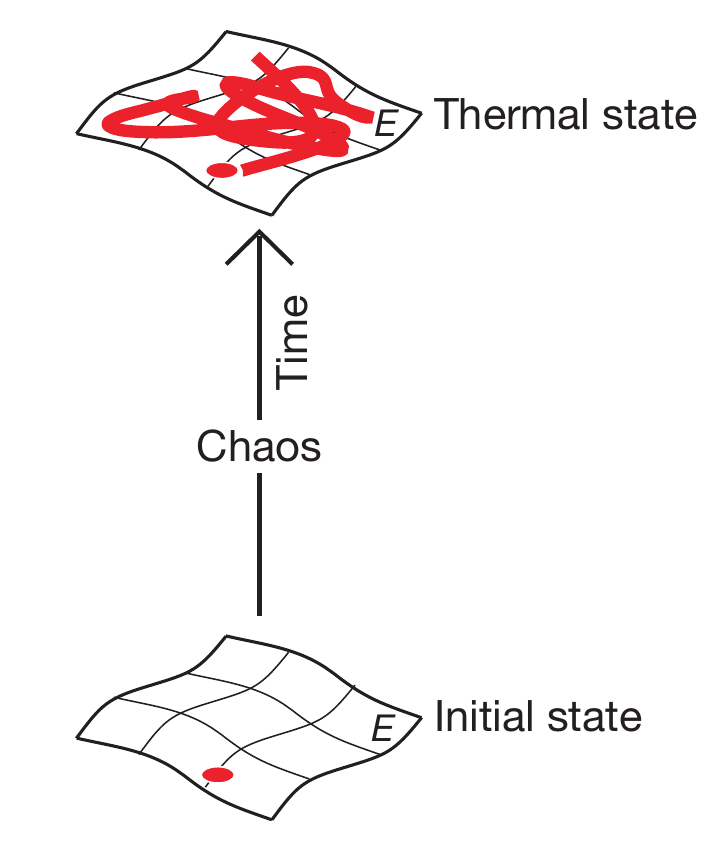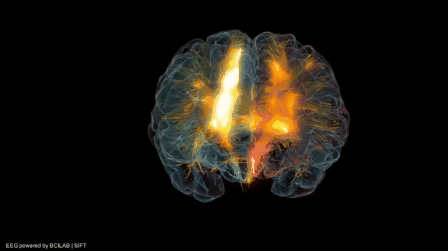What does 'critical' mean?
Experimental observations
via stochastic sampling
versus intrinsic system properties.
Claudius Gros, Dimitrije Markovic
Institut für theoretische Physik
Goethe-Universität Frankfurt a.M.
Overview
generating powerlaws: established (?) routes
- sandpiles - conserved dynamics with forced large events
- preferential attachement - rich gets richer
- continuously active networks (brain) - critical branching
- constrained information optimization +
logarithmic discounting (Weber-Fechner)
attractors in critical systems
- large number of 'small' attractors may dominate intrinsic state
- small number of 'big' attractors may dominate
observations (sampling) and biological properties
- NK / vertex routing models
infinite time-scale separation in sandpiles

- fat tails forced (sand can be lost only at the boundaries)
- conserved dynamics
$\ \color{darkRed}\Longrightarrow\ $
mapping to critical branching $(p=1/2)$ in infinite dimesion
$\ \color{darkRed}\Longrightarrow\ $
powerlaws
rich gets richer
Internet 2011: in-degree distribution

generating powerlaws via
preferential attachment
[Barabasi, Albert, ...]
- probability of external attachment: $\ \color{darkGreen} r$
- probability of internal attachment: $\ \color{darkGreen}{1-r}$
$$
p_k\ \sim\ \frac{1}{k^\gamma},\qquad
\gamma = 1+\frac{1}{1-r/2}
$$
$\ \color{darkRed}\Longrightarrow\ $
mostly internal growth
- distribution of citations
- ...
continuously active networks
[Markovic, Gros,
Powerlaws and Self-Organized Criticality in Theory and Nature,
Physics Reports 2014]
- brain is autonomous & continuously active
- homeostatically regulated
- time scale $\,\gg\,$ avalanche duration
- interacting network of responsive neurons
- $\color{darkRed}\Longrightarrow\ $ equivalent to critical
$\phantom{\Longrightarrow}\ \ $ branching $\ (p=1/2)$
- however: additional drivings
- spontaneously active neural centers
- inputs (coupling to order parameter)
sensory & from other brain areas
two viewpoints
|
$\ \color{darkRed}\Longrightarrow\ $
| slightly subcritical $\ (p<1/2)$
:: save distance from chaotic region?
|
|
$\ \color{darkRed}\Longrightarrow\ $
| critical point destroyed
:: close to Widom line?
:: (line of maximal response)
|
humans maximizing Shannon information
maximal entropy distributions
with constraint $\displaystyle\quad \langle x\rangle=\mathrm{const.}
\qquad\quad\color{darkBlue}{p(x)\ \propto\ \mathrm{e}^{-\lambda x}
}$
- e.g. Boltzmann factor $\ \ \mathrm{e}^{-\beta H}$
- $\beta=1/(k_B T)$: Lagrange multiplier
Weber-Fechner law
$$\scriptstyle
\begin{array}{llcll}
\color{darkGreen}{\mathrm{music:}} &
\mathrm{tone\ pitch} &\propto& \log(\mathrm{frequency}) &
\color{darkGreen}{\mathrm{(octave)}} \\
\color{darkGreen}{\mathrm{photometry:}} &
\mathrm{brightness} &\propto& \log(\mathrm{intensity}) &
\color{darkGreen}{\mathrm{(lumen)}} \\
\color{darkGreen}{\mathrm{acoustics:}} &
\mathrm{sound\ level} &\propto& \log(\mathrm{intensity}) &
\color{darkGreen}{\mathrm{(decibel)}} \\
\end{array}
$$
- humans discount most sensory inputs
logarithmically
- sound/light intensities
- number of objects
- time, ...
$$
\color{darkBlue}{x\ \to\ \log(x)}
\qquad \color{darkRed}{\Rightarrow} \qquad
\color{darkBlue}{p(x)\ \to\ \mathrm{e}^{-\lambda \log(x)}
\ \propto\ \frac{1}{x^\gamma}
}
$$
$\ \color{darkRed}\Longrightarrow\ $ scale invariant distributions
publicly available data files in the internet
 [Gros, Kaczor, Markovic, EPJB 2012]
[Gros, Kaczor, Markovic, EPJB 2012]
- 2011: massive crawl
- 32 million hosts
- 600 million data files
- Mime type classification
| image/ | :
| 58.0% |
| application/ | :
| 33.2% |
| text/ | :
| 5.8% |
| audio/ | :
| 2.9% |
| video/ | :
| 0.7% |
- compression
- image/gif: lossless
- image/jpeg: lossy
kink at 4M: amateur/professional?
distribution of 2-dimensional data files
 [Gros, Kaczor,
Markovic, EPJB 2012]
[Gros, Kaczor,
Markovic, EPJB 2012]
| $\ \color{darkGreen}\Longrightarrow\ $
| log-normal
|
| | distributions |
- file size (modulo compression)
- video/
time $\times$ (bytes per frame)
- audio/
time $\times$ (frequency resolution)
maximal entropy distributions for 2D data
- all quadratic constraints
- $xy$ - physical size of file
- $x^2$, $y^2$ - marginal variances
- maximal entropy distribution
$$\color{darkBlue}{
p(x,y)\ \ \propto\ \
\mathrm{e}^{-\,\lambda_1\, xy\, -\,\lambda_2\, x^2\,-\,\lambda_3\, y^2}
\ \ =\ \
\mathrm{e}^{-\,\lambda[\alpha\color{darkGreen}{(x+y)}\,+\,
\beta\color{darkGreen}{(x-y)}]^2}
}$$
logarithmic discounting
$$\quad \quad \color{darkGreen}{
x+y \ \ \to\ \ \log(xy)
\qquad\qquad
x-y \ \ \to\ \ \log(x/y)
}$$

- only total size $\ \color{darkGreen}{xy}\ $
is externaly observable
$\color{darkOrange}\Longrightarrow\ $ average
over $\ \color{darkGreen}{\log(x/y)}\ $
$\color{darkOrange}\Longrightarrow\ $ log-normal distribution
$$\color{darkBlue}{
p(x,y)\ \ \propto\ \
\mathrm{e}^{-\,\lambda''\, \log^2(xy)\, -\,\lambda'\, \log(xy)}
}$$
rank count vs. count probability
[Zipf '49, Cancho & Sole `03]$\qquad\quad$
40.000 most frequent (english) words

|

|
|
$$\color{orange}{\left(\frac{1}{R}\right)^\gamma}$$
|
$$\color{red}{\left(\frac{1}{C}\right)^{1+1/\gamma}}$$
|
wrap up - generating powerlaws
some stablished routes
- sandpiles / continuously autonomous active system
:: mapping to critical branching
- preferential attachement - rich gets richer
- constrained information optimization by humans
:: human neurophysiology (Weber-Fechner)
- ... (your routes)
- mechanisms generating general fat tails
... next: observing powerlaws
- the role of small attractors
NK / Kauffman networks


[Luque & Sole, ‘00]
$$
\begin{array}{rcl}
N & : & \mathrm{number\ of\ sites} \\
K & : & \mathrm{number\ of\ controlling\ elements} \\
\Sigma &= & (\sigma_1,\dots,\sigma_N),
\qquad\quad \sigma_i=\pm1
\end{array}
$$

number of (cyclic) attrators
$$
\begin{array}{rcl}
\color{darkOrange}{\mathrm{Kauffman\ '69:}} &\sim& \sqrt{N} \\
&\Rightarrow& \color{darkGreen}{\mathrm{cell\ differentiation}}\\[1.0ex]
\color{darkOrange}{\mathrm{Samuelsson\ \&\ Troein\ '03:}}
&>& O(N^p) \ \ \mbox{(any p)}
\end{array}
$$
are these (additional) small attrators relevant?
vertex routing models
transmission vs. routing
| transmission |
| routing |
| vertex $\ \color{darkOrange}{\Rightarrow}\ $ vertex |
| link (incomming)
$\ \color{darkOrange}{\Rightarrow}\ $ link (outgoing) |
| dynamical variables:
vertices | |
dynamical variables:
links | |
| | $\qquad\qquad$ | |
 | |
 |
[Markovic & Gros,
New Journal of Physics `09]
routing dynamics

| $\quad$ |
conserved?
| $\quad$ |

|
| | $\quad$ |
| $\quad$ | |
| yes
| $\quad$ | | $\quad$
| no |
| | $\quad$ |
| $\quad$ | |

| $\quad$ |
memory?
| $\quad$ |

|
cyclic attractors

- conserved
- with/without memory
- fully connected
- routing tables
- phase space
- directed links
- $\Omega=N(N-1)$
stochastig sampling of phase space
experimental observation /
biologically active networks
$$
\begin{array}{rcl}
\mathrm{start\ randomly} &\color{darkRed}{\Rightarrow} &
\mathrm{find\ next\ attractor}\\
&\color{darkRed}{\Rightarrow}&
\mathrm{evaluate\ attractor\ properties}
\end{array}
$$
| | intrinsic
property |
stochastic
sampling |
| with memory | number of cycles
mean cycle length |
$\log(N)$
$N/\log(N)$ | —
$N$ |
| no memory | number of cycles
mean cycle length |
$\log(N)$
$\sqrt{N}/\log(N)$ | —
$\sqrt{N}$ |
[Markovic, Schuelein & Gros, Chaos `13]
cycle length distribution

- scaling
| amplitude | : | $1/\log(\Omega)$ |
| intermediate | : | $1/L$ |
| large cycles | : | ${\scriptstyle(\dots)\,}\mathrm{e}^{-L}$ |
large and small basins of attractions

a Gedanken-distribution
- phase space $\quad \color{darkOrang}{\Omega = 2^N}$
- small attractors
- number: $\quad \color{darkOrange}{\sim 2^{\alpha N}}\qquad \alpha<1$
- size of basins of attraction: $\color{darkOrange}{\quad O(N^0)}$
- probability to find a small attractor
through stochastic sampling
$\displaystyle\color{darkGreen}{
\frac{2^{\alpha N}}{2^N}O(N^0) \ \ \sim\ \ 2^{(\alpha-1)N} \ \ \to\ \ 0
}$
- big attractors
- basins of attraction may fill
phase space
- polynomial scaling possible
criticality in statistical mechanics

second order phase transitions
- all observables, response functions
$\color{darkRed}\Longrightarrow\ $
scale invariant
- cirtical exponents, universality, ...
what are observables?
$\quad
\left\langle \sum_{states} \hat A(states)\,\mathrm{e}^{-\beta H(states)}
\right\rangle
$
thermodynamic averaging $\ \color{darkRed}{\hat=} \ $ stochastic sampling
$\hspace{5ex}\color{darkRed}\Longrightarrow\ $ `intrinsic properties' do
not matter
classical thermalization and sampling
 [Rigol, Dunjko & Olshanii, Nature `08]
[Rigol, Dunjko & Olshanii, Nature `08]
thermal states are 'typical' states
only regions in phase space contribute to
the thermal state, which have a finite
probability to be visited (closely) by
chaotic trajectories
$\color{darkRed}{\Downarrow}$
regions in phase space which are not sampled by the
internal dynamics do not contribute to the thermal state
| caveat for dynamical systems: |
$\ \ $ thermalization at zero temperature? |
| $ \ \ $ energy not defined? |
a given dynamical system may have interesting internal properties,
but in the end what matters is only what can be observed
textbook: complex systems

- 4-th edition May 2015
- self-organization / pattern formation
- sandpile / branching
- Turing instability / traffic models
- bifurcation theory
- local / global / catastrophes
- chaos / adaptive systems
- network theory
- boolean networks
- evolution / synchronization /
cognitive systems
 [C. Gros, Complex and Adaptive Dynamical
Systems, Springer 2008/10/13/15]
[C. Gros, Complex and Adaptive Dynamical
Systems, Springer 2008/10/13/15]





